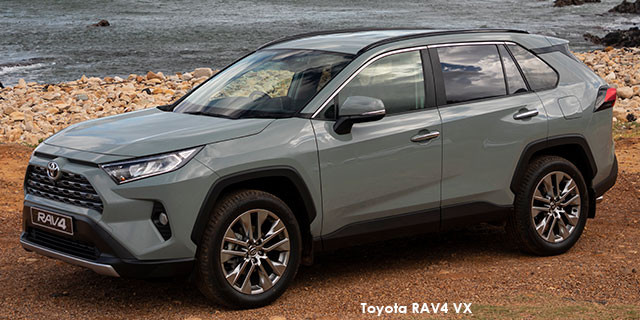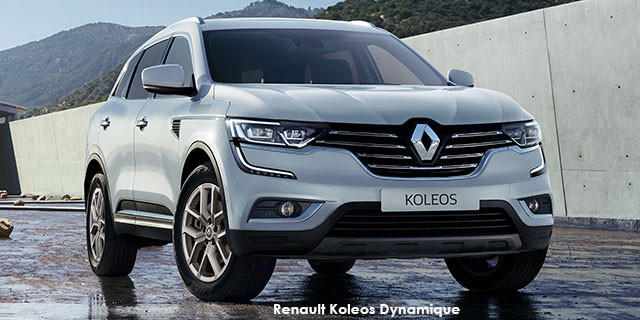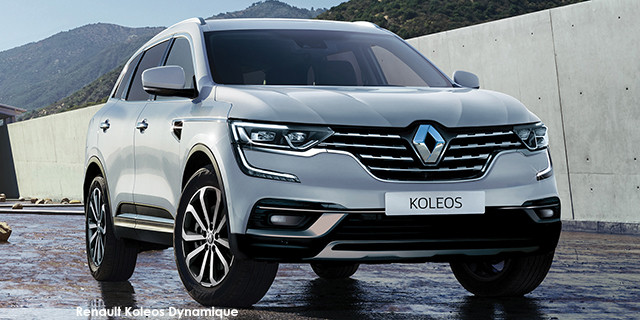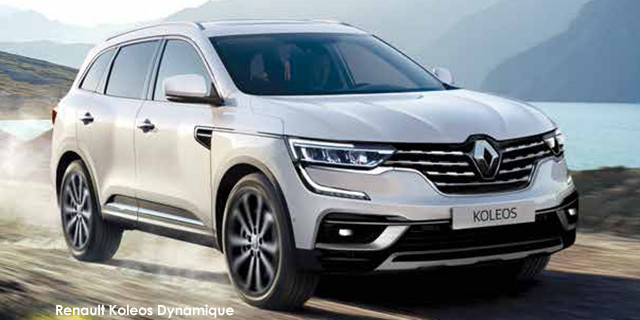Bolder, better built and ready to take its segment by storm, the new Toyota RAV4 first has to see off an unconventional new rival...
It’s hard to believe it was a quarter of a century ago when Toyota unveiled its funky midsize SUV to an automotive market then dominated by sedans and hatchbacks. In that time, many would justifiably claim the RAV4 was one of the founding fathers of the segment that’s since eclipsed all others, and the arrival of a new model would be met with great anticipation.
However, now in its fourth generation, the RAV4 enters a motoring sphere in which it no longer has the fold to itself.
Rivals from America, South Korea and, in the case of the Renault Koleos, France, have crowded the segment, making the fight for success all the harder. With all-new underpinnings, purposefully chunky looks and a huge legacy on its shoulders, the latest RAV4 looks to have what it takes to once again cause a stir in the midsize-SUV segment. But, when it comes across an unconventional rival in the guise of the latest Koleos, the result isn’t quite as clean-cut as you’d expect.
The players
From its fun-sized first-generation model, through to the sophisticated second and third generations, the RAV4 has proved a playful and utterly charming member of Toyota’s SUV stable. Things went aesthetically awry with the otherwise competent previous car but the latest iteration has shrugged off that clumsy blobbiness in favour of a more chiselled two-box frame; an appealing “Prado lite” approach, if you will.
Underpinned by a model-specific version of Toyota’s versatile New Global Architecture (TNGA) platform, the RAV4’s wheelbase has grown by 30 mm, while its trimmed overhangs and broader tracks mean it’s actually a hair shorter and wider than its forebear.
Although it wears the Renault rhombus on its striking nose and that rakish bodywork is perched atop a tweaked version of the Mégane’s CMF-C/D platform (which also underpins the now-unavailable Kadjar), the Koleos follows in its predecessor’s footsteps, being based on Nissan’s robust and reliable X-Trail.
The game
In a similar vein to our 2019 SUV Shootout, the two contenders were piloted across a variety of motoring environments, including the notoriously sinuous Franschhoek Pass, both sweeping and arrow-straight sections of the N2 and a gravel road or two thrown in for good measure. This broad spread of road conditions would highlight their respective strengths and weed out any weaknesses.
On the road
Like the X-Trail, the Koleos is an accomplished, if not sparkling, performer on tarred surfaces. Were you not aware of its Japanese bones, you may conclude before setting off it possesses the pleasing suppleness of chassis that’s a hallmark of many Renault products.
The RAV4’s new platform has shifted its centre of gravity downwards and improved torsional rigidity by a claimed 57%, making it feel a bit sharper-witted when presented with sudden changes in direction and dynamic attitude.
When it comes to ride quality, there’s little to separate the two. We’ve had nothing but good experiences with Toyota’s TNGA-based products, commenting on their ability to strike a neat balance between handling and ride comfort. It’s the same story here, with the Toyota’s double-wishbone tail not serving up quite the same degree of shock absorption as the Renault’s multilink rear arrangement but proving the more versatile of the two.
The RAV4’s electrically assisted power steering doesn’t have the Koleos’ weight and chunkiness but there’s an ace up its sleeve, lending it a dynamic edge over its rival: a torque-vectoring system utilising twin couplings on the rear axle has been incorporated into its suite of AWD features. By distributing torque laterally between the rear wheels, this system counters the understeer often inherent to AWD vehicles, including the Koleos. This was particularly evident on the tighter sections of Franschhoek Pass, where brisk cornering manoeuvres saw the Renault’s nose washing wide while the Toyota’s front-end drew cleaner into the bend.
On the dirt
With little to separate them in the ground-clearance department, their dynamic composure and respective AWD systems would be the deciders off the beaten track. The Koleos mounts the X-Trail’s torque-apportioning system, with presets of 2WD, automatic (where the ESP decides the fore/aft torque split) and lock that distributes drive 50:50 front and rear.
It’s a similar story in the RAV4, where an intelligent, ESP-overseen system is capable of shifting and locking torque, but also serves “mud and sand” and “rock and dirt” modes tailoring steering assistance, as well as brake and throttle modulation, to best suit the predetermined conditions.
Both cars’ sturdy underpinnings and simple AWD systems will allow them to venture further off-road than most owners will likely go but that lateral torque-vectoring system lends an additional layer of safety when travelling over loose surfaces at speed.
Both powertrains under strain
Despite both vehicles playing host to naturally aspirated 2,5-litre, four-cylinder petrol engines coupled with automatic transmissions and electronically governed AWD systems, their respective on-road manners are markedly different.
Under the Renault’s bonnet, the long-serving Alliance QR25 powerplant is good for 126 kW at a heady 6 000 r/min and 233 N.m from 4 000 r/min. Compared with the 152 kW/243 N.m unit in the RAV4, it’s sprightly off the line but quickly starts struggling on lengthy uphills, where its CVT doesn’t help matters. Perhaps it’s a case of mapping or the engine’s modest outputs but, in every scenario where throttle inputs moved away from being anything but gradual, the transmission would hang doggedly on to one of its lower virtual ratios, sending the rev needle soaring into the red before finally dropping back to a more civilised speed. Consequently, mechanical refinement took a serious knock, with a gruff engine note accompanying many manoeuvres at speed.
The Toyota, with its stronger outputs and torque-converter ‘box, should’ve had its rival’s number but a couple of obstacles stood in the way of smooth going. The A25A-series engine runs on the Atkinson cycle, which favours thermal efficiency. While it did allow the Toyota to reach 100 km/h from standstill in less than 10 seconds and best the Renault for in-gear acceleration, to slip beneath our 8,76 L/100 km fuel-index figure – not to mention its 8,0 L/100 km showing on our fuel run beating the Renault’s 8,3 – it did so at the expense of low-to-mid-end grunt.
A number of the testers were flummoxed by the Toyota’s transmission; its prodigious slip and consequent tendency to hunt for the right gear made it feel disconcertingly similar to a CVT.
In the cabins
The competition has been close to this point but, when it comes to their respective cabins, it’s the Toyota that pulls away from its rival. Although solid enough in terms of its perceived quality, the Renault’s plastics and trim fit can’t quite match those of the Toyota. Dense plastics and a simple, tiered layout with chunky switchgear for such frequently used ancillaries as the climate-control system represent a quantum leap over its forebear. We’re not fans of the RAV4’s odd brown trim used to line various cubbies, though.
There’s no denying the Renault’s interior is a stylish affair, its TFT speedo/rev counter combination looking less of an afterthought than the Toyota’s, but the placement of many secondary controls within its sizeable touchscreen infotainment system meets with mixed success. It may be function-rich (with plenty of navigation and media options) but its laggy processor irks and the need to mine the interface to access the automatic climate control settings is fiddly.
Both cars impress with their practical packaging: the Renault’s 724 mm of rear legroom and the Toyota’s 408-litre boot are immensely generous, the latter being more accessible owing to a lower 691 mm loading height versus the Renault’s 755 mm.
TEST SUMMARY
Here’s where the Renault begins to claw back the ground it lost in other aspects of the test. This halo petrol model’s Dynamique specification throws in that versatile touchscreen infotainment system, dual-zone climate control, leather upholstery and a raft of safety features at a price point nearly R100 000 beneath the Toyota’s.
Saving the RAV4 from ignominy is the near-certainty of much stronger resale value. If their predecessors’ trends are anything to go on, the previous RAV4 still manages to hang on to a good deal of its value come resale time, while the relatively fringe-placed Koleos is harder hit by depreciation and so mostly eradicating that price difference.
Ultimately, the Toyota’s win here isn’t quite the comprehensive affair the manufacturer would have expected – the Renault’s striking looks and rugged, proven underpinnings mean there’s little to separate them – but the RAV4 feels more modern in the way it drives and has a touch more dynamic ability, both on- and off-road.
The pricing, however, remains a sticking point in this test, hence the single-point gap. Looking down their respective model lines – perhaps forsaking AWD and opting for a manual gearbox – will net you even greater value for money and products more mechanically balanced than the ones gathered here.
ROAD TEST SCORE

|

|

|

|

|

|

|

|
Original article from Car











